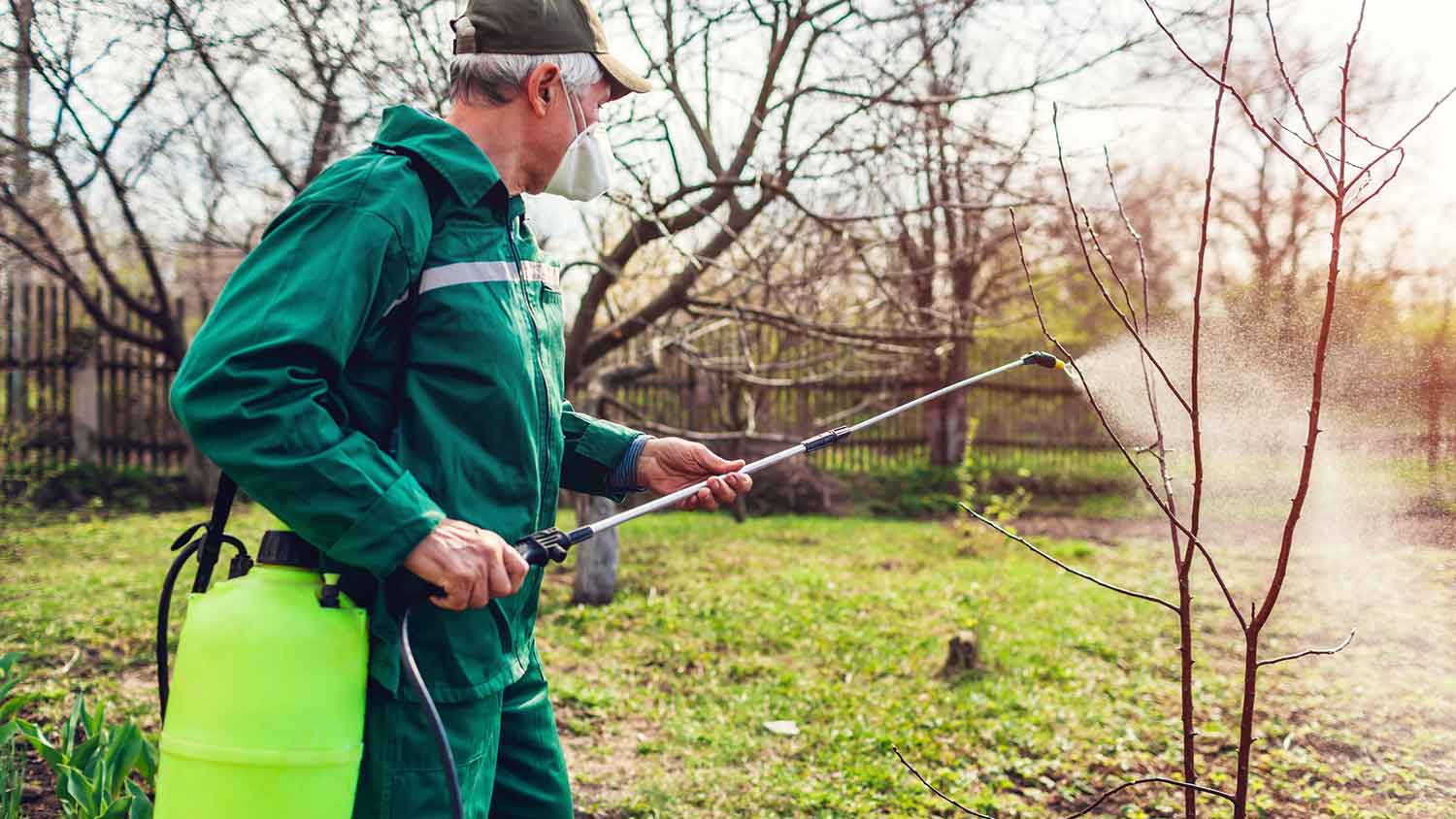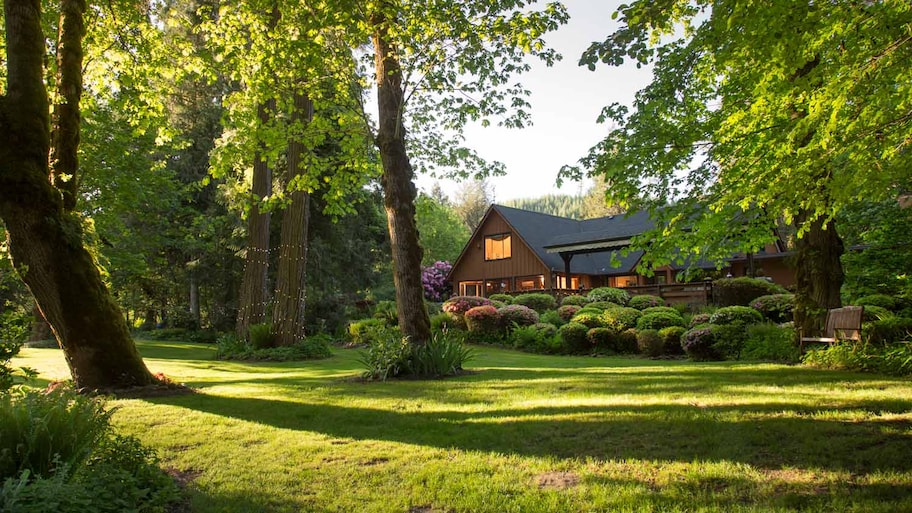How Much Does An Arborist Cost? [2025 Data]
The average cost to hire an arborist is $875. Depending on the service type, tree size, and number of trees, costs can range anywhere from $75 to $5,000.


Some arborists charge for an initial inspection—$75 to $150—while others waive it if you hire them for service.
Arborists offer a variety of services, so your cost depends on the complexity of the job and your specific tree.
If you hire an arborist for pest control, expect to spend between $40 and $70 per month.
Booking during the off-season (fall and winter) can save you a decent amount on your total cost.
If you’re looking to give your trees expert-level TLC, hiring an arborist costs $875 on average. Depending on factors like the size and number of trees, the site’s accessibility, and the type of treatment, costs can range anywhere from $75 to $5,000. Let’s review how much an arborist costs to hire for help reviving a sick or diseased tree.
Arborist Cost Factors
Here are the main factors that will affect how much hiring an arborist costs.
Consultation Cost
Some arborists bill $75 to $150 for an initial consultation or inspection. However, some professionals will provide a consultation free of charge or waive the fee if you decide to hire them to complete the required service. For a comprehensive tree report covering multiple trees, the cost ranges from $450 to $700.
Hourly Rates
It’s uncommon for an arborist to charge an hourly rate, but if they do, it ranges from $75 to $200 per hour. Most arborists will charge homeowners by the service type and size instead of an hourly rate.
Service Type
The wide array of services an arborist offers means prices can vary significantly. Here are the most common services offered and their associated costs.
| Tree Service | Description | Average Cost |
|---|---|---|
| Tree Trimming and Surgery | Pruning or removing branches to improve tree health, appearance, or safety | $75–$1,500 |
| Tree Cabling | Installing cables to support and stabilize weak or misaligned tree limbs | $200–$400 |
| Deep Root Aeration | Drilling holes around the tree to improve soil and water access for the roots | $100–$300 |
| Deep Root Fertilization | Injecting nutrients directly into the soil to promote healthy tree root growth | $100–$350 |
| Tree Planting | Planting new trees, including the labor and materials needed for proper planting | $100–$300 |
| Tree Removal | Safely cutting down and removing trees that are dead, diseased, or hazardous | $200–$5,000 |
| Stump Removal | Grinding or removing tree stumps to clear space or prevent regrowth | $90–$1,200 |
| Tree Inspection | Assessing tree health and stability to recommend care or removal actions | $0–$150 |
| Tree Injections | Injecting treatments directly into the tree to fight pests, diseases, or nutrient deficiencies | $50–$200 |
| Wood Chipping | Chipping branches and tree debris into mulch or small pieces for disposal or reuse. | $75–$300 |
Tree Size and Type
The size and type of tree are vital factors that can significantly impact the cost of hiring an arborist. Larger trees require more time, labor, and specialized equipment to trim, treat, or remove. Mature trees with extensive root systems or taller heights are more complex to work on, which increases the price. Additionally, the type of tree can influence cost, as some species (such as hardwood varieties) are more difficult to prune or treat.
Site Accessibility
Site accessibility plays a crucial role in determining arborist costs. If a tree is close to a house, near power lines, in a tight yard, or otherwise difficult to access, it may require extra effort, specialized tools, or additional labor to ensure safe and efficient work. Limited access increases the complexity of the job, leading to higher service fees.
Ongoing Tree Care Costs

So, how much does an arborist cost? Aside from the initial service, consider factoring these ongoing costs into your total budget.
Pest Control Visits
Regular pest control visits from an arborist cost around $40 to $70 per month. Pest control services, such as tree spraying, require more than a one-and-done approach, so it’s a good idea to schedule ongoing visits to stay proactive against bugs and diseases.
Regular Inspections
Scheduling regular inspections from an arborist costs around $75 to $150 on average. In-depth tree reports are significantly more expensive, costing up to $700.
DIY vs. Hiring a Professional Arborist
When it comes to tree maintenance, tackling smaller tasks like pruning can be manageable for experienced DIYers. However, even for these smaller tasks, it's important to have the right tools, such as a pole saw, which can cost anywhere from $40 to $600 or more. For complex jobs like sick tree diagnosis, it's best to leave it to the professionals due to the serious safety hazards involved. While the initial cost of hiring a professional may be higher, it can save you from potential injury or property damage in the long run.
Hiring a certified local arborist not only saves you money on equipment costs, but also brings their valuable expertise. Their experience and specialized equipment can significantly reduce the time it takes to complete the job while ensuring the tree's health and safety. The peace of mind and assurance that your trees are well taken care of make hiring a professional well worth the extra investment.
Cost of Common Arborist Add-Ons
Bundling arborist and tree maintenance services can save you time and money. Here are a few add-ons to consider when booking your service:
Tree transplanting costs: $300–$10,000
Lawn aeration costs: $75–$205
Bush or hedge trimming costs: $450–$1,440
Leaf removal costs: $190–$600
How You Can Save Money When Hiring an Arborist
Depending on the type and number of services, hiring an arborist can get pricey. However, there are a few ways you can help keep costs down:
Bundle services: If you need multiple services like diagnosing multiple diseased trees, bundling them can reduce the total cost.
Off-season discounts: Arborists may offer lower rates during fall and winter when demand decreases.
Handle basic tasks yourself: Clearing debris or taking care of minor pruning tasks can help you save on labor costs.
Compare quotes: Always get multiple estimates and compare service packages from different pros to ensure you're getting the best deal.
How Angi Gets Its Cost Data
Home is the most important place on earth, which is why Angi has helped more than 150 million homeowners transform their houses into homes they adore. To help homeowners with their next project, Angi provides readers with the most accurate cost data and upholds strict editorial standards. We extensively research project costs to develop the pricing data you see, so you can make the best decisions for you and your home. We rely on reputable sources, including the U.S. Bureau of Labor Statistics, academic journals, market studies, and interviews with industry experts—all to ensure our prices reflect real-world projects.
Want to help us improve our cost data? Send us a recent project quote to costquotes@angi.com. Quotes and personal information will not be shared publicly.
Frequently Asked Questions
An arborist specializes in tree care, performing tasks such as pruning, treating diseases, and removing hazardous trees. They also assess soil conditions, plant trees, and develop landscaping plans to ensure healthy growth. They also manage debris cleanup, inspect equipment, and record maintenance activities. Arborists often collaborate with landscapers and professional tree maintenance services, applying their specialized knowledge and problem-solving skills to maintain tree health and safety.
Many states require arborists to be licensed within that state in order to offer their services. However, the best arborists are certified by the International Society of Arboriculture (ISA) Credentialing Council, so you should verify that credential before you hire. Seek out a professional arborist with the necessary credentials and positive recommendations from local homeowners.
The best pro to hire for spraying trees is a tree maintenance specialist. These pros are well-versed in selecting the right spray treatment and applying it properly to ensure there’s no collateral damage to the tree or surrounding landscape. Many tree maintenance services employ certified arborists, but for these routine visits, the extra investment usually isn’t necessary.
Ideally, you should wait to prune until trees have gone dormant in late fall to early winter. The worst times to prune trees are early fall and late summer, as pruning them so close to dormancy makes it difficult for the tree recover before it goes dormant for the season.
The best time to spray fruit trees for bugs varies by treatment, but for preventative visits, the ideal time to spray is in early spring. During this time, fruit trees are still in dormancy, but temperatures are warm enough (at least 40 degrees Fahrenheit) for the treatment to be effective. Regular insecticides can be applied throughout the growing season as needed; however, it’s crucial to avoid spraying fruit trees while their blossoms are in bloom, as this can harm bees and other important pollinators.














